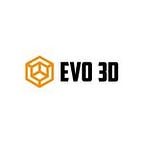Schools are increasingly looking for innovative ways to teach. If students are bored with the teaching style and methods, teachers should come up with ways to make learning more interesting and interactive. Using technology in education has far-reaching benefits, and more educators are incorporating 3D printing into their curriculum.
The invention of the industrial FDM printer was a watershed moment for people looking to easily manufacture items. However, students now have numerous opportunities thanks to the use of 3D printing in education. Using 3D printing to excel with passion can result in growth and development for future designers and engineers. With the significant reduction in the cost of 3D printers, they have become the most valuable educational tool. Here are some reasons to choose a 3D printer for education
Educate Students to Experiment
Experimental thinking focuses on developing practical solutions by determining the source of the problem and refining prototypes to address it.
Students can use 3D printing technology to repeat, prototype, and test their solutions in the real world. Students benefit from understanding that it is acceptable to make mistakes on the first try and that they can use those mistakes to improve their designs through debugging. Gaining confidence and endurance in problem-solving is an important life skill that results from becoming acquainted with this repeated process.
Students who have the opportunity to experiment can develop the skills required to face real-world challenges and become tomorrow’s leaders.
Building Strong Ties in School
Connect students from different grade levels by pairing them up to work on a 3D printing challenge together, as one Australian school did, or use 3D printing to raise funds for a local hospital, as one Canadian school did. 840 community members at a remote school worked tirelessly to design and 3D print individual blocks for the school sculpture. A fun, all-school 3D printing competition is a great way to increase school spirit.
Develop Future Leaders.
Using a 3D printer is a way towards becoming future leaders and develop something better for future. Bringing 3D printing into lives of young people is an excellent way to innovate and make changes in their lives.
Always ensure to give necessary skills, resources and guidance to develop solution and help them recognize need. Students can create a prototype, design and come up with a solution of their own, more like design thinking which enhances their critical thinking skills through trial and error.
Promotes Creativity
With 3D printing, students can take things in stride and expand their creativity. Students can now experiment with various materials and see what happens with equipment like filament extruders. This could lead to both unexpected successes and failures. Both of these can aid a student’s development once they have mastered a specific topic or subject.
Develop Problem-Solving and Critical Thinking
The development of 3D printing was extremely innovative, providing businesses and individuals with a simple way to produce goods quickly and affordably. The use of 3D printing in education provides students with countless learning opportunities in a wide range of subjects.
In math and engineering classes, students frequently wonder whether a particular equation will be useful.
Before being 3D printed, an object must first be designed in a CAD program. STEAM courses are commonly used to help students better understand their projects. Because 3D printing is interactive, students must apply what they’ve learned in math, engineering, or other relevant fields to a project while also solving problems. To better understand a topic
The potential benefits appear to be limitless, and depending on how they are integrated into education, some will be more fruitful than others.
Expose Yourself to Different Learning Styles.
Using instructional strategies, 3D printers for education expose students to a variety of learning styles. 3D printing in education can greatly benefit both visual and linguistic learners.
By incorporating Peek 3D Printer into a lesson plan, visual learners can see a model, concept, or solution in action rather than just in a textbook. Visual learners can examine the print from all sides, which improves comprehension and learning outcomes, whether it’s a 3D-printed model of the human heart or a miniature replica of a historical structure.
Do you want to try and damage a PEEK component? That would be a difficult task given its well-known chemical resistance to a wide range of organic and inorganic compounds, as well as its remarkable resistance to hydrolysis in hot water.
PEEK is nearly insoluble in all major solvents at room temperature, except for a few strong acids such as hydrofluoric acid and sulfuric acid (95% concentration).
PTFE is the only polymer that does not absorb water; the others are PEEK, PEI (Ultem®), PP, PPS, PSU, PPSU, PVDF, PET, PPE, and PE. PC, ABS, PA12, and POM are among the polymers with low water absorption rates.
